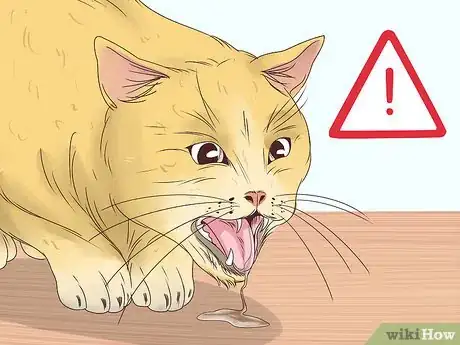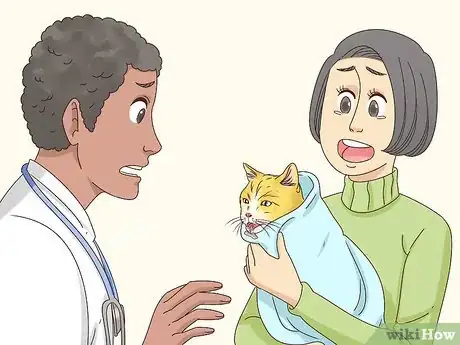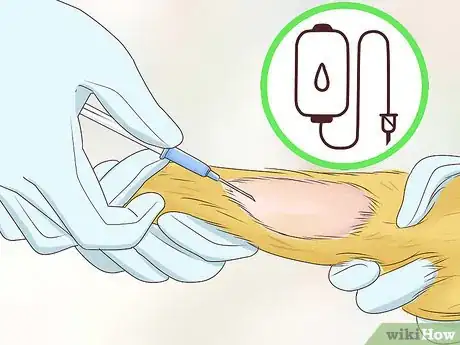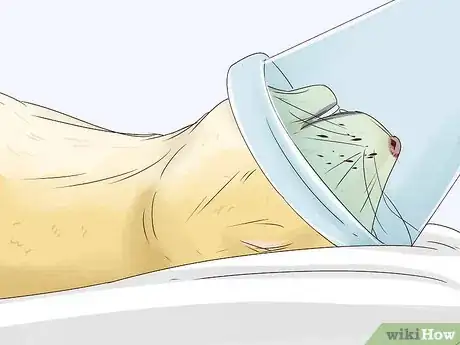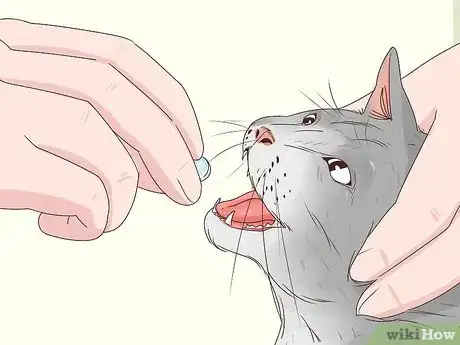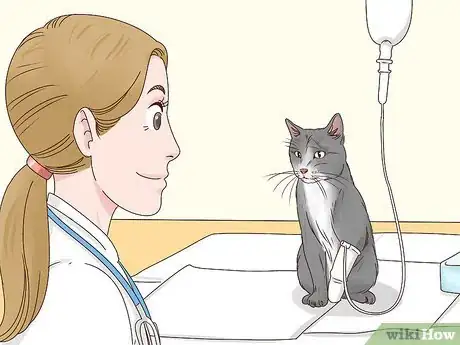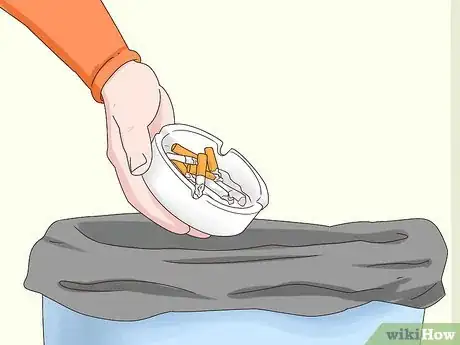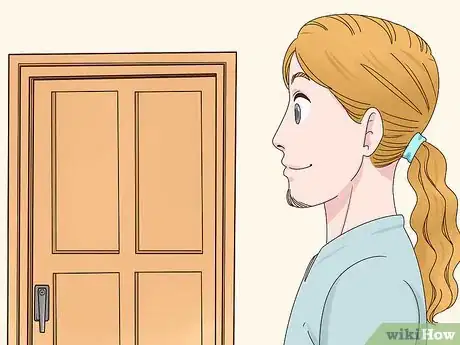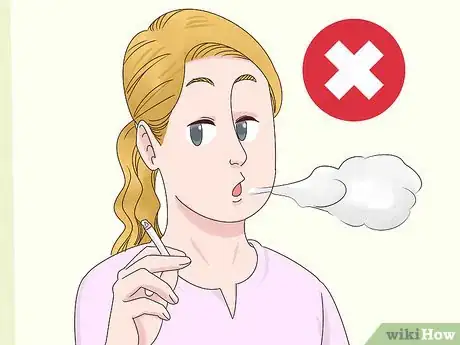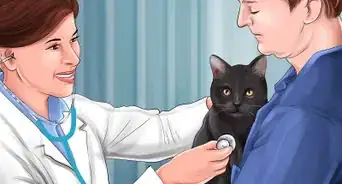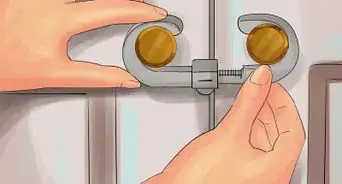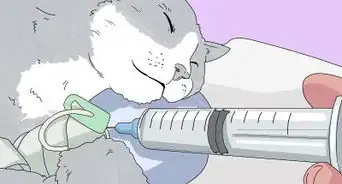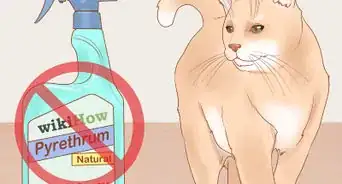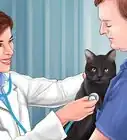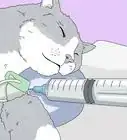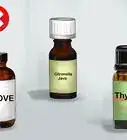This article was co-authored by Melissa Nelson, DVM, PhD. Dr. Nelson is a Veterinarian who specializes in Companion and Large Animal Medicine in Minnesota, where she has over 18 years of experience as a veterinarian in a rural clinic. She received her Doctor of Veterinary Medicine from the University of Minnesota in 1998.
This article has been viewed 25,148 times.
Nicotine poisoning in your cat can occur through either ingestion or absorption of a tobacco or nicotine product, like cigarettes, cigars, chewing tobacco, e-cigarette juice, nicotine patches, and nicotine gum or candy. Once nicotine is in your cat’s system, symptoms will develop quickly. Therefore, you will need to take your cat to the vet immediately to ensure a successful recovery. The vet will treat your cat by responding to its immediate symptoms. Prevent nicotine poisoning by keeping your tobacco products out of reach or by securing them in a locked drawer or cabinet.
Steps
Responding to the Situation
-
1Observe symptoms. Early symptoms of nicotine poisoning are hyperactivity/acting overexcited, agitation/restlessness, disorientation, constricted pupils, excessive drooling/salivation, vomiting, diarrhea, and panting or trouble breathing. This may occur within 15 to 20 minutes of ingesting a tobacco or nicotine product.
- More advanced symptoms include twitching, tremors, seizures, muscle weakness, coma, collapse, increased heart rate and cardiac arrest. These symptoms can occur within 15 to 90 minutes of ingesting a tobacco product.
-
2Avoid inducing vomiting. Try to avoid doing this, especially if you think the poisoning is due to the ingestion of e-juice from e-cigarettes. Since the e-juice is absorbed through the mucous membranes in your cat’s mouth, inducing vomiting is ineffective.Advertisement
-
3Take your cat to the vet immediately. Do this once you are aware that your cat has been poisoned. Do not try to treat your cat at home first. The successful recovery of your cat depends on rapid medical treatment. Therefore, the sooner your cat can get professional medical treatment, the better.[1]
- If you do not have a vet, then take your cat to the nearest veterinary hospital, or call the Pet Poison Helpline at 1-800-213-6680 (U.S.) or 01202-509-000 (UK).
- If you want, you can bring the suspected source of poisoning with you to the vet.
Treating Your Cat at the Vet
-
1Induce vomiting. If your cat is not vomiting already, then the vet will give it a drug to induce vomiting. The vet may do this if you think your cat has been poisoned by ingesting a tobacco product like cigarette/cigar butts or nicotine gum/candy.[2]
-
2Give your cat activated charcoal. Activated charcoal helps absorb traces of nicotine in your cat’s gastrointestinal tract. This aids in the elimination of nicotine from your cat’s system.[3]
-
3Place your cat on IV fluids. To help flush out the nicotine in your cat’s system, the vet will place your cat on an IV. This is a routine procedure no matter how your cat has been poisoned, whether it was through ingestion or absorption.
-
4Provide your cat with oxygen. If your cat is having trouble breathing, then the vet will give it oxygen. An oxygen mask will be placed on your cat’s face to aid in breathing.[4]
-
5Administer medications. The vet will give your cat medications to decrease its blood pressure and slow its heart rate. If your cat is experiencing tremors or seizures, then medications will be given to help manage and control these as well.[5]
-
6Monitor your cat. The vet will want to monitor your cat for at least four hours. The vet will monitor your cat's blood work to ensure that damage to its internal organs, like its liver, has not occurred.
- If damage to your cat's internal organs has occurred, it may have to undergo surgery to alleviate the damage.
- After 16 hours, your cat’s body should be free of nicotine.
Preventing Nicotine Poisoning
-
1Keep tobacco products out of reach. Place e-cigarettes (and vials containing e-juice), nicotine gum and candy, transdermal patches, chewing tobacco, cigars, and cigarette packs up high in a cabinet or on a high shelf. You can also keep your tobacco products in a locked drawer or cabinet.[6]
- If you keep some of your products in a purse or backpack, then make sure to place your bag out of reach, or take them out of your bag and secure them when you get home.
-
2Discard cigarette butts in the trash. Do this once you are done smoking. Try to avoid leaving cigarette/cigar butts on the ground outside. Additionally, make sure to empty your ashtray in the garbage once you are done smoking, or place it up high and out of reach.[7]
- If any e-juice has spilled on the floor or other surfaces that your cat can reach, make sure to clean the spills thoroughly. The spilled e-juice can get on their paws and they may lick it off.
-
3Have a designated smoking room. Make one of the rooms in your apartment or house a cat-free zone where you can enjoy your tobacco products in peace. This way you can control your cat’s exposure to tobacco products. Make sure to close the door when entering and leaving the room.[8]
- You may want to place a lock on the door to prevent your curious cat from entering when you are not home.
- Alternatively, you can decide to only smoke outside to lower your cat's exposure to tobacco products.
-
4Stop using tobacco products. This is a foolproof way to prevent any type of nicotine poisoning in your cat. There are a variety of methods available to help you quit using tobacco products. You can try commercial products to help you quit, or you can choose to quit the natural way.
References
- ↑ http://www.petpoisonhelpline.com/uncategorized/e-cigarettes-pets-mix/
- ↑ http://www.greenbrier-emergency.com/nicotine-toxicity-in-pets/
- ↑ http://www.greenbrier-emergency.com/nicotine-toxicity-in-pets/
- ↑ http://www.petpoisonhelpline.com/uncategorized/e-cigarettes-pets-mix/
- ↑ http://www.petpoisonhelpline.com/poison/nicotine/
- ↑ http://www.petpoisonhelpline.com/uncategorized/e-cigarettes-pets-mix/
- ↑ http://www.greenbrier-emergency.com/nicotine-toxicity-in-pets/
- ↑ https://pawesomecats.com/dangers-cigarette-smoking-around-cats/
About This Article
To tell if your cat has nicotine poisoning, look for excessive drooling, vomiting, diarrhea, panting, agitation, and constricted pupils. If your cat has any of these symptoms, take it to the vet immediately. Expect your vet to induce vomiting and give your cat activated charcoal to absorb traces of nicotine in its gastrointestinal tract. Your vet will also put your cat on IV fluids to flush out its system, and might also give your cat medications to decrease its blood pressure and slow its heart rate. For more information from our Veterinary co-author, like how to prevent your cat from getting nicotine poisoning, keep reading!
